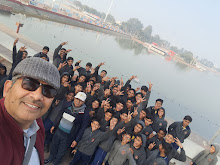Objectives of the Course: This module has been prepared to create outreach and enhance advocacy with students and teachers across schools in India on the health and environmental impacts of e-waste. There are hazardous elements in e-waste. e-waste also contains materials which are important as far as their circular economy potential is concerned. Resource efficiency can be enhanced if e-waste is properly collected and channelized for recycling so that materials can flow back into the production process.
The Overall Learning Objectives of the course is to create awareness and enhance outreach
and advocacy on the subject of electronic and electrical waste in students of standards 7-9.
By the end of the course students will be able to:
• Define Electronic Waste
• List down the hazardous and non-hazardous substances in E-waste
• Explain the environmental and health impacts of E-waste
• Explain the need for E-waste Rules 2016
• Illustrate with examples the concepts of sustainable consumption and lifestyles of health
and sustainability
• Apply the concepts of sustainable consumption and lifestyles of health and sustainability
to develop their personal action plans
• Create a plan to set up an E-waste collection points in their homes, schools and
neighborhoods
Of the topics that will be covered in the course, the students will be able to;
• Explain the unique features of Mother Earth as an ecosystem
• Identify linkages between waste generation and health & environmental hazards
• Explain different types of waste with examples
• Assess the growth of information technology and generation of E-waste • Learn about the
role of young people in reducing E-waste
• Define E-waste
• Understand the global and the national data on E-waste
• Identify the various categories of E-waste
• List the constituents of E-waste
• List down the hazardous and non-hazardous substances in E-waste
•Explain the environmental and health impacts of E-waste
• Explain the E-waste management scenarios
• Explain the tenets of the E-waste rules 2016
• Summarize resource utilization
• State the various Sustainable Development Goals (SDGs)
• Explain sustainable consumption and LOHAS
• Identify the ways one can practice sustainable consumption and LOHAS in one’s life
Students can take up this non-credit course as a learning experience on one of the most
important aspects of waste generation across the world today. E-waste growth across the
world is estimated at close to 30% which makes it a very important sector for the future as
far as livelihoods, its management and its environmental and health significance is
concerned. The objectives of the course help to create a holistic learning experience for
students so that they evince interest in this sector and become ambassadors for the change
that needs to come as far as disposal behavior of consumers and generators is concerned.
DIKSHA Learning Platform
Content Outline
The content of the course has been divided into 6 blocks. These blocks have a video and a
pdf presentation through which the entire content is presented. The outline of the course is
stated below:
Unit 1.1
Introduction to the course
Unit 1.2
Need for the course on E-waste
Unit 2.1
What is E-waste?
Unit 2.2
What are the constituents of E-waste?
Unit 3.1
What are the hazardous substances in E- waste?
Unit 3.2
What is the impact of E-waste on health and environment ?
Unit 4.1
What is the need of E-waste Rules?
Unit 4.2
What are the E-waste Rules ?
Unit 5.1
Resource Utilization and Sustainable Development Goals (SDGs)
Unit 5.2
LOHAS ( Life Styles of Health and Sustainability)
DIKSHA Learning Platform
DIKSHA Learning Platform






































